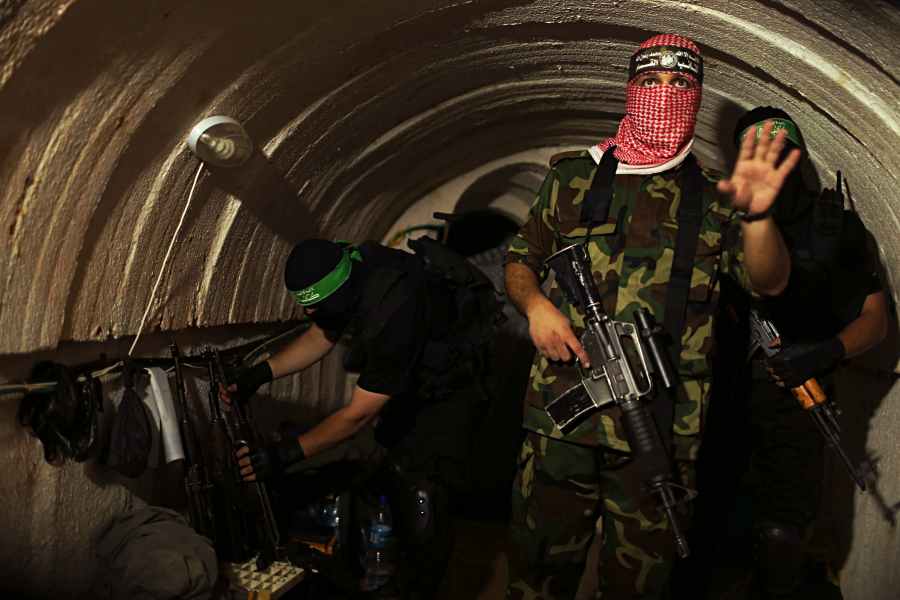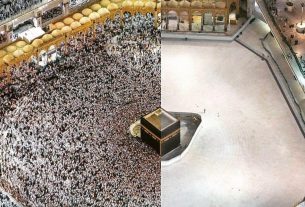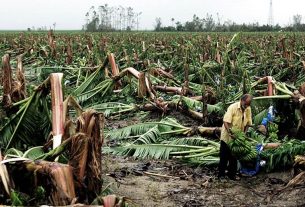Thu 09 October 2023:
More Israeli soldiers might die as the invading troops take the battle underground, into the feared Hamas tunnels.
As everyone tries to read more into the announcement by Israel’s prime minister that it may allow “little tactical pauses” to let hostages out or aid in, fighting in Gaza continues.
Calls for a ceasefire, pause, or whatever term might appear in tedious international political haggling, are mounting from all sides but Benjamin Netanyahu and his hawkish unity government are trying very hard to avoid losing momentum, fearing that once stopped, their Gaza offensive would be much harder to restart.
The unyielding aerial bombing has killed more than 10,000 Palestinians and caused almost unbelievable levels of destruction, but the number of Hamas fighters eliminated is unknown. Even if those attacks were to have killed 1,000 Qassam Brigade fighters, which is impossible to prove, the ratio must make many Israelis quite uneasy: an enormous military effort for little military gain.
The number of Israeli combat casualties is still low, about 30, considered acceptable, but how will society react if they start rising? Significantly more Israeli soldiers might die as the invading troops surrounding Gaza City – who have cut it off on the surface from the southern part of the Strip – take the battle underground, into the feared Hamas tunnels.
Digging and counter-digging
Digging tunnels for military purposes is a concept from the times of the first human settlements and it never ceased being used. Until the invention of gunpowder, tunnels served to enter defended castles or leave besieged towns without breaking out. Gunpowder gave tunnellers the ability to set off large explosions under their enemies’ positions, to be followed by massive attacks that would take the territory.
While tunnelling decreased among equally matched armies after World War I, it found new life when used by the underdogs in asymmetrical warfare. China used tunnels to defend itself from Japanese invasion in the 1930s.
Japan, recognising their effectiveness, started digging too. Applying modern digging and defensive techniques, Japan used tunnels extensively to defend occupied Pacific islands against Allied invasion, inflicting large casualties on the United States Marines and Allied forces, highly disproportionate to the defenders’ numbers.
A generation later, the Vietcong fighting the US in Vietnam used tunnels to move around, or rather under, their enemies, escape encirclement in one spot and mount surprise attacks in others. Their tunnel network was vast: just in the southern region of Cu Chi, the US Army verified more than 320km (200 miles) of underground communications. Those 60-year-old figures make the Palestinian claims of 300-500km (186-310 miles) of tunnels under Gaza plausible.
Bantams, Rats and Weasels
Every nation or army that had to fight an enemy using tunnels quickly realised that regular soldiers were near-useless for that specialised task. They were not trained diggers, and many were uncomfortable in the claustrophobic dark, damp environment with bad air. In 1914, Britain started employing miners and training them for military tasks.
Then it created special Bantam troops made of soldiers whose short stature, under 160cm (5.25 feet), excluded them from serving in regular units. They did far better than usual troops, as did the “Tunnel Rats” underground warfare specialists the US used in Vietnam.
When it first discovered and studied the Gazan tunnels, during the 2000-2005 first Intifada, Israel realised that danger from underground warfare would grow, and set out to create units fit for the role, starting with the Combat Engineers, known as Yahalom.
The Combat Engineers quickly realised that, despite their technical skills and specialised equipment, even more narrowly focused, armed and trained troops were necessary.
In 2004, the Weasels (Samur), the first Israeli tunnel-warfare commandoes, appeared. The specialists originate within the engineering corps and were trained in undercover assault techniques by Sayeret Matkal commandoes. They will certainly be the first Israeli troops in the Hamas tunnels.
Extending tunnels under the Strip
Tunnels under Gaza predate Hamas – to the 1980s when they were first dug under Egypt’s border for smuggling. Palestinians in Gaza discovered that, except in the narrow belt along the coast where the soil was sandy and quite unsuitable for digging, the rest of Gaza’s earth was clay-rich, easy to dig through and generally not requiring complex supports.
In time, Palestinians realised that the tunnels could have a military use and they employed the tunnellers to extend the network under Gaza.
When Hamas took over, the effort was given a strategic role and expanded. Most of the tunnelling was done by local civilian workers, who were allegedly paid better than average salaries for the gruelling work.
Operating beneath territory they controlled, Hamas did not have to worry about one of the greatest perils of tunnelling under or near the enemy: being located by the noise or vibration of digging. Free from that constraint, they are said to have worked quickly.
When it attacked Gaza in 2014, Israel was stunned at the extent of the tunnels, then believed to have surpassed 100km (62 miles), and their sophistication. It realised it had to speed up its underground warfare preparations.
Tomorrow: How underground warfare in Gaza will look, a point-by-point analysis

______________________________________________________________
FOLLOW INDEPENDENT PRESS:
WhatsApp CHANNEL
https://whatsapp.com/channel/0029VaAtNxX8fewmiFmN7N22
![]()
TWITTER (CLICK HERE)
https://twitter.com/IpIndependent
FACEBOOK (CLICK HERE)
https://web.facebook.com/ipindependent
Think your friends would be interested? Share this story!





